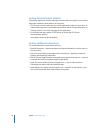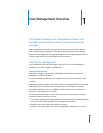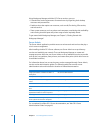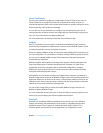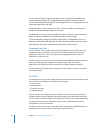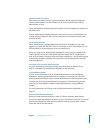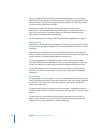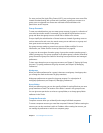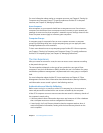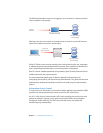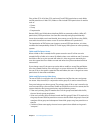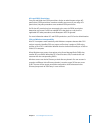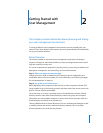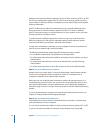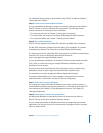
26 Chapter 1 User Management Overview
For more information about setting up computer accounts, see Chapter 6, “Setting Up
Computers and Computer Groups.” To specify preferences for Mac OS X computer
accounts, see Chapter 10, “Managing Preferences.”
Guest Computers
Most computers on your network should have a computer account. If an unknown
computer (one that doesn’t have a computer account) connects to your network and
attempts to access services, that computer is treated as a guest. Settings chosen for the
Guest Computer account apply to unknown guest computers.
Computer Groups
A computer group is composed of one or more computer accounts or computer
groups. By combining these into a single computer group, you can apply the same
managed preferences to all its members.
To learn more about how to set up computer groups for Mac OS X client computers,
see Chapter 6, “Setting Up Computers and Computer Groups.” To specify preferences
for Mac OS X computer groups, see Chapter 10, “Managing Preferences.”
The User Experience
After you create an account for a user, the user can access server resources according
to the permissions you set.
The user experience depends on the type of user, permissions set, type of client
computer in use (such as Windows or UNIX), whether the user is a member of a group,
and whether preference management is implemented at the user, group, or computer
level.
For more information about the Mac OS X user experience, see Chapter 9, “Client
Management Overview.” Basic information about authentication, identity validation,
and information-access control is given in the following sections.
Authentication and Identity Validation
Before a user can log in or connect to a Mac OS X computer, he or she must enter a
name and password associated with a user account accessible by the computer.
A Mac OS X computer can access user accounts that are stored in a directory domain of
the computer’s search policy:
 A directory domain stores information about users and resources. It is like a database
that a computer accesses to retrieve configuration information.
 A search policy is a list of directory domains that the computer searches when it
needs configuration information, starting with the local directory domain on the
user’s computer.



